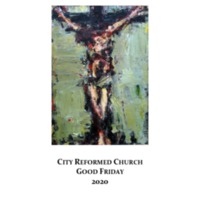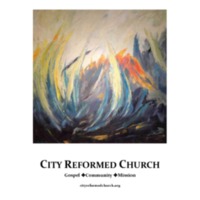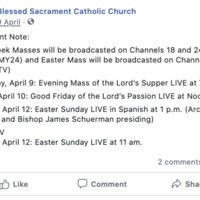He is Risen But We are Still at Home
Perhaps the most disturbing thing for both churches was the fact that COVID-19 intruded upon the most important period of the liturgical calendar: Holy Week. And yet both churches carried on their business. The only major difference between the two congregations was that Blessed Sacrament directed its parishioners to the televised mass led by Archbishop Lesticki.
In the case of both Blessed Sacrament and City Reformed Church, the leadership sought to provide for the spiritual needs of their congregants while maintaining social distancing to ensure their physical well-being. Both sets of leadership went about this in a similar fashion by recording their religious services. They also provided additional online support to their congregants. As the crisis persisted, though, both congregations experienced “the grind” of social distancing and the deprivation of incarnate worship. This was perhaps especially painful for these congregations on account of the high esteem with which they hold the sacrament of the Lord’s Supper. While Blessed Sacrament’s daily masses is typical of Catholics, City Reformed Church’s commitment to weekly communion is somewhat unusual in Protestant circles. In this way, despite the theological differences between these two congregations, both looked forward to the day when they could meet again with their respective community to partake in fellowship and communion.




